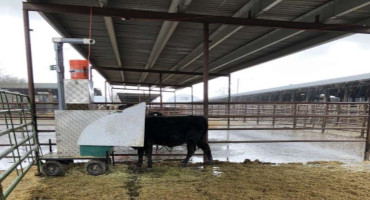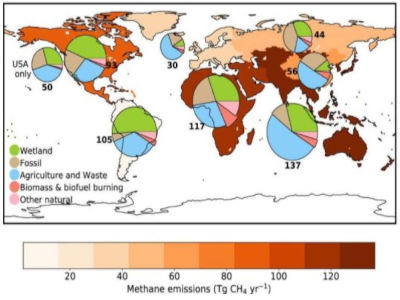
A little seaweed with that?
Better growth with less feed
For the study, we added 1.5 to 3 ounces of seaweed per animal daily to 21 beef cows' food for 21 weeks. As with most new ingredients in cattle diets, it took some time for the animals to get used to the taste of seaweed, but they became accustomed to it within a few weeks.
As we expected, the steers released a lot more hydrogen—up to 750% more, mostly from their mouths—as their systems produced less methane. Hydrogen has minimal impact on the environment. Seaweed supplements did not affect the animals' carbon dioxide emissions.
We also found that seaweed that had been stored in a freezer for three years maintained its effectiveness, and that microbes in the cows' digestive systems did not adapt to the seaweed in ways that neutralized its effects.
We fed each of the animals three different diets during the experiment. These rations contained varying amounts of dried grasses, such as alfalfa and wheat hay, which are referred to as forage. Cattle may also consume fresh grass, grains, molasses and byproducts such as almond hull and cotton seed.

Global methane sources include fossil fuel and biomass combustion, agriculture (mainly livestock), the breakdown of waste in landfills and natural decomposition in wetlands.
Methane production in the rumen increases with rising levels of forage in cows' diet, so we wanted to see whether forage levels also affected how well seaweed reduced overall methane formation. Methane emissions from cattle on high-forage diets decreased by 33% to 52%, depending on how much seaweed they consumed. Emissions from cattle fed low-forage diets fell by 70% to 80%. This difference may reflect lower levels of an enzyme that is involved in producing methane in the guts of cattle-fed low-fiber diets.
One important finding was that the steers in our study converted feed to body weight up to 20% more efficiently than cattle on a conventional diet. This benefit could reduce production costs for farmers, since they would need to buy less feed. For example, we calculate that a producer finishing 1,000 head of beef cattle—that is, feeding them a high-energy diet to grow and add muscle—could reduce feed costs by US$40,320 to $87,320 depending on how much seaweed the cattle consumed.
We don't know for certain why feeding cattle seaweed supplements helped them convert more of their diet to weight gain. However, previous research has suggested that some rumen microorganisms can use hydrogen that is no longer going into methane production to generate energy-dense nutrients that the cow can then use for added growth.
Click here to see more...